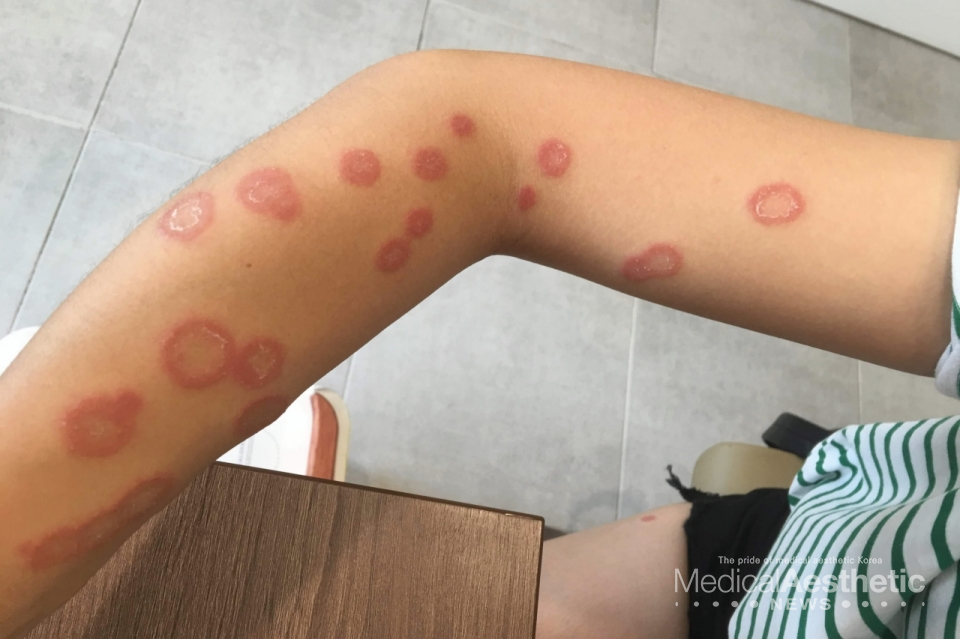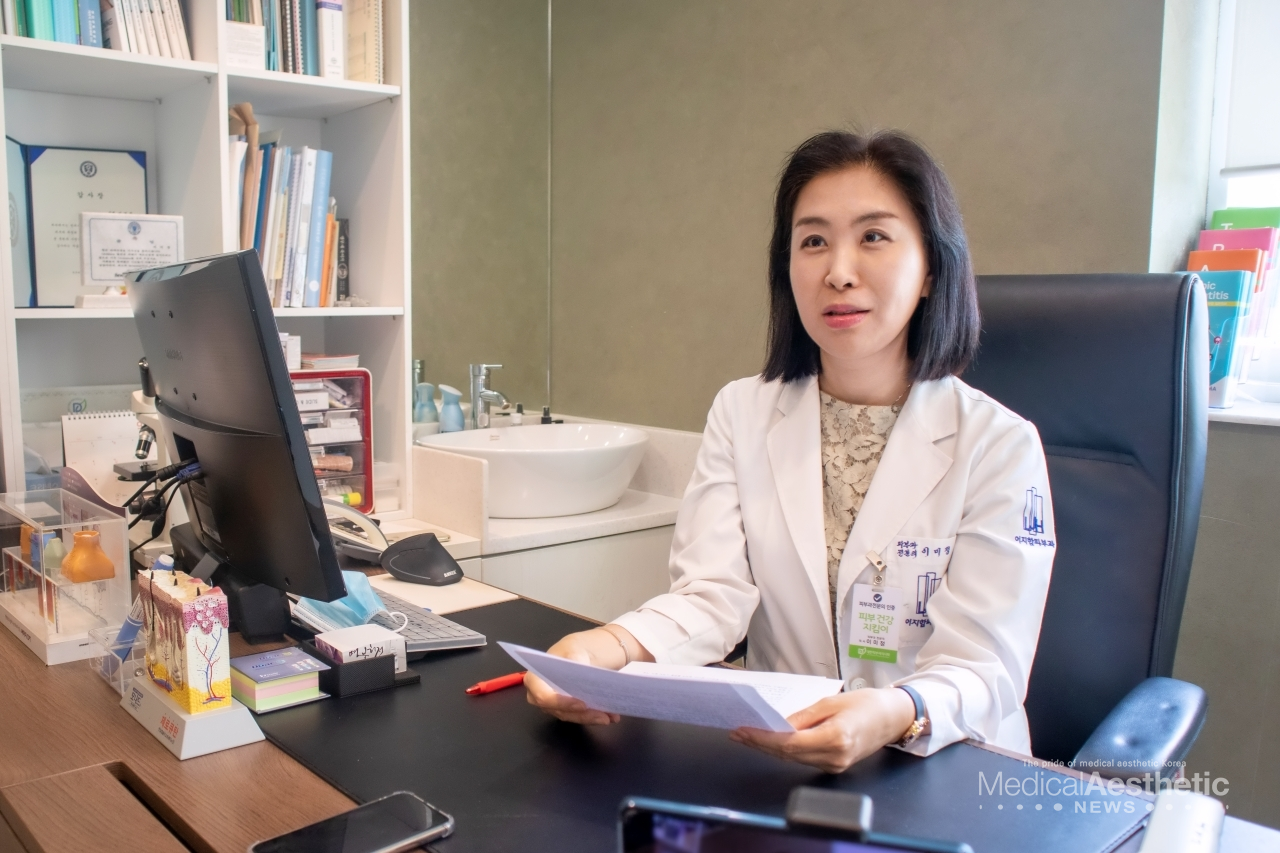Type of Trichophytosis
1. Tinea capitis
It appears on the head and is mainly transmitted through contact with pets such as dogs and cats. Also, it can be transmitted through hair equipment or items such as combs, hats that is used by tinea capitis patients. When you infected, you can see the gray or red sales on the scalp and hair loss in some places. In severe cases of inflammation, it leads to extensive hair loss, and pus pockets or enlarged lymph nodes may appear.
2. Tinea corporis
It appears on the skin of the body except for the head, hands, feet, and groin. It is usually caused by the transfer of fungal bacteria from their own onychomycosis. It can be caused by poor humidity control in the living place or holding pets. Round-shaped lesions with clear borders of various sizes show a spreading form and may be accompanied by spots covered with debris or inflammation.
3. Tinea faciei
It appears on the face except for the beard area in men and be transmitted through their own onychomycosis or through pets. Red spots and itching occur. In the beginning, it starts with small red spots, and it often appears white dead skin cells, so it is easy to confuse it with seborrheic dermatitis.

4. Tinea cruris
It appears in the groin area and mainly occurs in adult males. In the groin where the skin overlaps, there is a lot of moisture and sweat, so fungus can easily spread. Tinea cruris is frequent cases that shares 20~30% of trychophytosis. If a person with tinea pedis or onychomycosis wears trousers and the crotch of the trousers touches their feet, the fungus can spread to the crotch of the trousers and spread to the groin. Tinea cruris appears as a circular or semi-circular, reddish-brown scale lesion with clear borders. In severe cases, it can spread to genital area, around anus, buttocks, or the inside of the thigh, and leave scales and pigmentation.
5. Tinea pedis
- Case 1. Interdigital type: The interspace and underside of the toes are generally involved, and maceration between the toe is usually present.
- Case 2. Hyperkeratotic type: Continuing tinea pedis, the skin of the palms and soles become thick, and the dead skin cells fall into a fine powder from when scratched.
- Case 3. Vesicular type: There are large and small blisters form with itching on the palms and toes.
Tinea pedis is often not treated because it does not cause any severe problem, but it is easy to infect other parts of the body, and if can cause secondary infection to inflammation or cellulitis. The fungus on hand or foot can lead to tinea pedis, which turns white or yellow and thickens. Tinea pedis presents more frequently with age, because the nail growth rate is relatively slow down compared to the young people. Recently it presented in young women who have nail are and pedicure. In severe cases, the fungus penetrates the cracked skin to occur inflammation or secondary infection. It can cause pain by deforming the nail or burrowing into flesh, and it can also cause the bacteria to easily spread to other skin.

How to treat 'Trichophytosis'
1. Medication
Tinea is treated by taking or applying antifungal medications. The recurrence is frequent, treatment should be continued for at least 3 months. In many cases, medication is discontinued arbitrarily when symptoms get better, and the causative fungus cannot be completely killed, causing recurrence.
2. Prevent infection
Tinea is more likely to occur in a humid environment where mold thrives, so you should avoid leaving your body wet. It is recommended to use cotton clothes, underwear, and socks to absorb sweat well, and dry them completely after bathing or showering. It can transmit in crowed places such as saunas and swimming pools, so you should not share clothes, shoes, or towels with other people. It can be helpful to check your pet for fungal infections from time to time, and it is best to avoid contact with wild animals as much as possible.
3. Pay attention for each tinea
If you have tinea capitis, it is necessary to pay special attention to the cleanliness of the scalp. If you have tinea pedis, you should avoid wearing tight gloves and shoes for nail or toenail. Some people do self-treated with folk remedies, such as soaking hands and feet in vinegar water but it can occur secondary infection.
4. Experts advise
Dr. Mijung Lee, president of LeeJiHam dermatologic clinic in Yeouido, said, “ Tinea is not a disease that cannot be cured, but some patients think that it cannot be cured or the antifungal medicines get worse. If you get antifungal treatment at the clinic in the beginging, treatment is not difficult, so she recommends that you do not use folk remedies and get a prescription from the clinic, if you leave untreated tinea area, the treatment will become more difficult and longer.”


